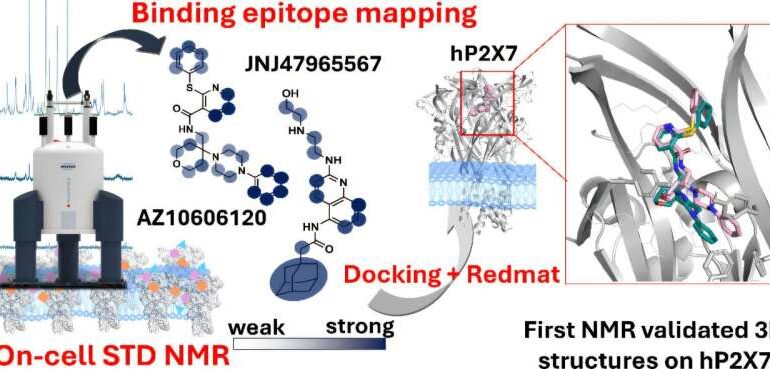New Technique Transforms Drug Design for Ion Channel-Related Diseases

An international research team has developed a groundbreaking technique aimed at accelerating the design of drugs that target ion channels, vital proteins implicated in a range of diseases, including psychiatric disorders and various cancers. This innovative method, created by the Institute of Chemical Research—a joint center of the University of Seville and the Spanish National Research Council—is expected to significantly streamline drug design processes.
Carried out in collaboration with the University of East Anglia and the Qadram Institute in the United Kingdom, the study was published in the Journal of the American Chemical Society on November 15, 2025. Ion channels play a crucial role in numerous biological processes, such as nerve transmission and muscle contraction, and their dysfunction is linked to many health issues, making them essential targets for therapeutic intervention.
Revolutionizing Drug Interaction Studies
Traditionally, studying drug interactions with ion channels required complex isolation techniques that could alter the proteins’ behavior. However, the new method utilizes nuclear magnetic resonance (NMR) to observe these interactions directly in living cells. “Our technique allows us to study these interactions without the complications of isolating the proteins, leading to more biologically relevant information,” stated Jesús Angulo from the Institute of Chemical Research.
The new technique not only accelerates the experimental process—completing tests in under an hour—but also reduces costs and simplifies procedures by eliminating the need for prior protein purification. Researchers anticipate that this method could become a standard tool in structure-activity studies, which investigate how the chemical structure of a drug correlates with its pharmacological effects.
Implications for Future Research
The technique has already been successfully tested on P2X7 receptors, which are potential therapeutic targets for conditions such as depression and certain autism spectrum disorders. According to Serena Monaco, a researcher at the Qadram Institute, “We can now identify which parts of a drug interact with the protein in living cells, enabling us to optimize these interactions. This information is crucial for developing more effective and specific medications.”
Additionally, the researchers utilized software developed at IIQ-CSIC-US to combine their experimental findings with three-dimensional models of drug-receptor binding, generated through bioinformatics. This integration allowed for validation of which computer-generated models matched laboratory observations, enhancing the accuracy of drug design.
Angulo elaborated, “The interaction between a drug and a protein can be likened to a lock and key: the membrane protein is the lock, and our drug is the key. We not only need to find the right key but also determine how to insert it for maximum effectiveness.” The ability to validate three-dimensional computer models on living cells represents a significant advancement in drug development for these proteins.
This innovative approach promises to open new avenues for research across various fields, including neurological, cardiovascular, metabolic, and oncological diseases. The researchers believe that by improving the speed and accuracy of drug design, they can contribute to the development of therapies that better target the underlying causes of these diseases.
For further details, refer to the study by Serena Monaco et al, titled “On-Cell Saturation Transfer Difference NMR Spectroscopy on Ion Channels: Characterizing Negative Allosteric Modulator Binding Interactions of P2X7,” published in the Journal of the American Chemical Society (2025). DOI: 10.1021/jacs.5c02985.
This advancement in drug design not only enhances the potential for new treatments but also sets a precedent for future research methodologies in pharmacology.






